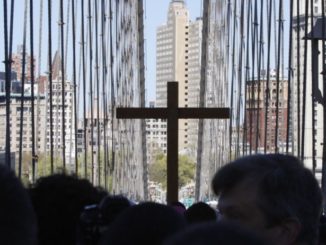
Isabel Cocker/The Santiago Times Staff
LOS ANGELES – When Osvaldo Jara, the Director of Tourism for the Municipality of Valparaiso, started at his new post in early 2017 at the behest of the Mayor, he was faced with a big challenge. The city, part of which is a UNESCO World Heritage Site, didn’t particularly have a tourism plan. No plan, not to improve the visitor numbers, to stabilize the city’s tourist infrastructure, or to involve the community in planning for a better city.
The previous administration had used a strategy called Plan Rumbo, but this had been inactive since 2014, and by 2017 felt dated. Speaking when he took the post, Jara confirmed that “what the plan did was to improve the way in which tourism was promoted from the UNESCO declaration – basically it only focused on small central areas of the city. Because of this, we have restarted the planning process. Things have changed and we think that it is possible to promote tourism in other ways. The goal is to widen what the city offers for tourists, improving the touristic vocation of the entire city.”

This new plan, which will be unveiled at the end of summer, has used a much more community-based approach in its construction. Five seminars have been scheduled to discuss elements of the plan, everything from planning permission, to B&B licenses and even the encroachment of taxi firms such as Uber. But, as Osvaldo Jara stressed whilst talking at the World Tourism Cities Federation Summit in Los Angeles last week, these meeting are “open to anyone who wants to come, anyone who happens to walk into the building.”
Chile ranked 33rd in Global Competitiveness Index 2017-2018
The response from the city has been “incredible” according to Jara – at each seminar so far, turnout has been between 200 and 300 people. It is his belief that the city’s tourism should work for the community, so that everyone benefits in the best way possible. “We have to listen to everyone”, he commented, “It is not easy. When there are disagreements, we have to work hard to solve them. And we can’t just change things for the sake of changing things.”
World Tourism Cities Federation Summit 2017 opens in Los Angeles
As an example, Jara raised the issue of unlicensed B&Bs which are set up without the city’s permission, a situation which he wishes to rectify. “[the owners] told us that to get the license, you had to go to one office, who said you needed a permission signed by a different office, who then sent them back to the first office because they said they needed that signature first”, he recounted.
The process of legalizing the business was so complex that for many business owners it made more sense just to go without, and the city authorities were unaware of the problems they were having. These seminars provide a platform for the city to identify and correct bureaucratic issues, making it easier for business owners to legally join the tourist trade.
The city also wants to work with citizens and the UNESCO federation to solve problems posed by the declaration of the city as a heritage site. According to UNESCO, there cannot be further murals or graffiti painted on the city walls. However, as Jara declared proudly, “the murals are real pieces of art, and they are part of the DNA of the city. They can’t just be painted over”. Besides, if the city were made to return the walls to their natural states, there would be many angry homeowners in the centre who have paid famous artists to create pieces on their walls.

This type of negotiation is a slow process, one which should not be rushed. It will take diplomacy and discussion with both the UNESCO federation and the self-same artists and homeowners in the city in order to reach a result.
Latin America – A new market for the global tourism sector?
However, the biggest issue for Valparaiso is not bureaucratic issues, neither is it the challenge of maintaining the UNESCO status. There can’t be a sustainable and growing tourist economy without first improving some of the most basic infrastructure of the city. Jara has declared a need for big data, information which will enable them to improve the service of the city, tailoring it to the preferences of those who visit most. As part of this, a new website for the Municipality of Valparaiso will be released in six weeks, which Jara hopes will allow them to collect “ages, genders, where people stay, how long people stay for” among other values. This will relate not only to visitors, but also to the citizens of the city.

As well as the technological functionality of the city, the municipality wants to improve the practical functionality of the city, which currently doesn’t work fully for either citizens or tourists. Many of the details in the tourist plan include measures which will mutually benefit both parties, because “there are problems which primarily affect the city, but also have a big impact on tourism.”
Jara highlights the planned construction of public toilets, something which Valparaiso currently does not have. These will perform a dual function: firstly, that tourists will have somewhere as a service during the day, and secondly, that they will help to clean up the streets.

He pointed out that, “Valparaiso has problems with things like garbage treatment, delinquency and incivilities. These incivilities include bad uses of the city, like urinating on the streets, which is something you see a lot during the night.” He hopes that the construction of public toilets, to be charged during the day but free at night when they are most needed, will provide for those people who are currently forced to use the streets to relieve themselves. “You can’t just forbid it, you have to provide an alternative”, he stressed.
“We want tourism to be about identities, not attractions”, Jara commented.
The identity of Valparaiso lies in its cultural scene, its music and poetry, its art, and in its complete uniqueness as a city. The challenge is now to highlight that those features and improve the city’s functionality for both tourists and citizens without losing the captivating individuality of the coastal port.



